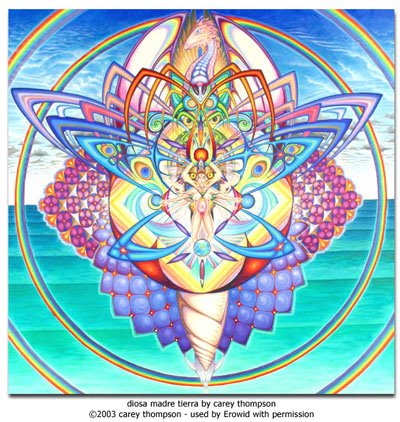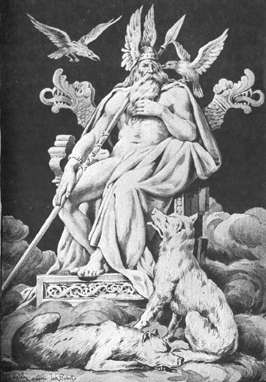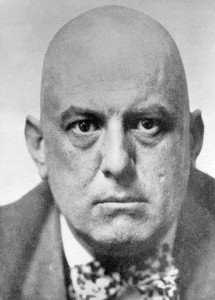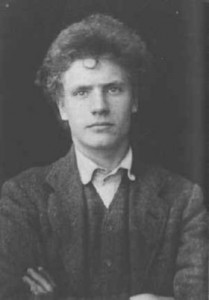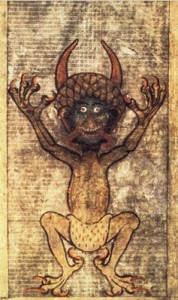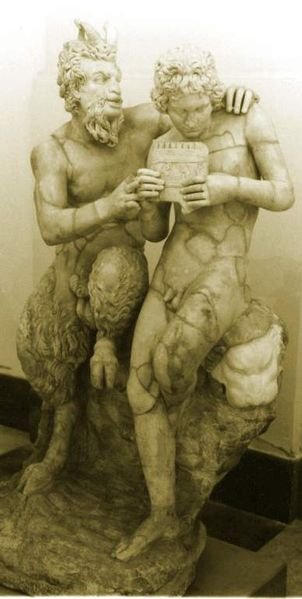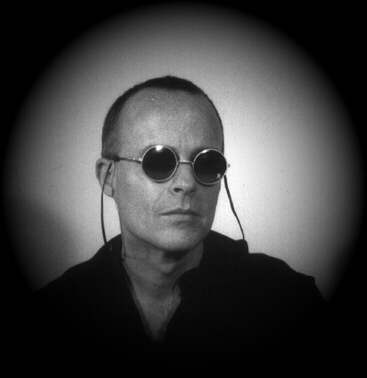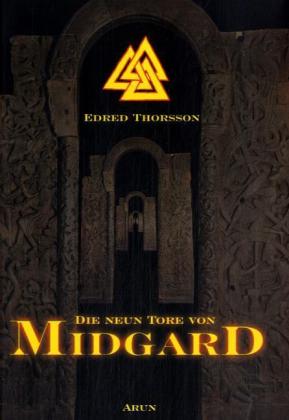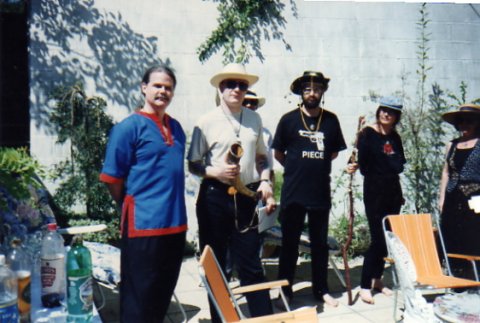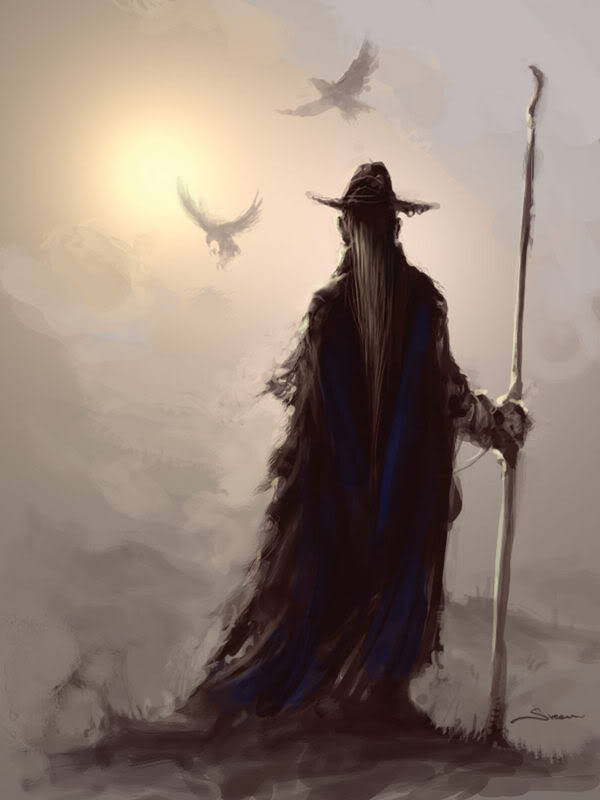Magick is black
Reason is white
Thus magick’s unseen
It’s nature’s to hide

Introduction:
“No-Thing is true. Everything is trance-mitted.” The Fool of the Sacred Chao
My name is Matt Anon. I’m a Chaos Mystic and Left-Hand Path initiate (for my take on the LHP, see below), who studies Chaos Magick, Galdor and esoteric Runology within the broader philosophy of Chaos Heathenism. The aim of my magick is encoded in my name, beside the desire to fall in love with divine mystery :ᚱᚢᚾᚨ: and to reawaken the ancient wisdom in my Soul. I’m attracted by the conception of a Perennial Philosophy that appeared under different guises independent of epoch or culture and seek to understand its eternal mysteries. One of the maps of special interest to me that represents an expression of that perennial wisdom is the Runic tradition as it manifested in the cosmological and magico-mystical structures of Northern European spirituality. I’ve been interested in ecstatic experiences and inspired and altered states of consciousness since my youth. I hold many wyrd beliefs that are subject to change on my journeys along the pathways that lead down, around and up the Tree. That’s why I believe that beliefs and all dualities are fetters to be loosened (the mystic’s aim) or played with (the magician’s game), rather than unchangable dogmas set in stone. Two major influences are to be named that initially got me into the Northern Mysteries: Fire + Ice and True Helm.
I explore the Runic Mysteries by emulating the divine archetype of the Rune-Master Óðinn, who is seen as a mythical role model for spiritual development. But I would look at all philosophical, metaphysical and magical worldviews not as a reality, but recognize them “as models or maps, and no one model elevated to the truth.” (RAW). That’s why I combine different approaches and techniques of sorcery and mysticism (= magick) to my own Self-Empowerment and explore the mysteries of consciousness and nature.
Though I began experimenting and toying around with magick as a teenager (often intoxicated by shroooooms), my more serious and structured involvement with magick began in my early 20’s (see for my magickal background here). Having gone through all kinds of phases and systems, beliefs and dogmas (though for many years my main focus has been Crowley’s system of Thelemic Magick), ‘enlightenments’ and delusions, I stopped looking for an occult system that ‘explains’ everything and deludes the seeker that the inexplicable could be presented in a ‘step-by-step’-system to enlightenment. After all I came to ponder about the chaosmagickal saying: ‘Nothing is True, Everything is Permittes’. Nevertheless I’m against a postmodern (POMO) relativism with its “Anything-goes”- triviality. This is, perhaps, my only real criticism of the Chaos Magick Current (though also here we begin to hear diverse voices). Once I heard clearly “das Raunen der Runen” (the whispering of the Runes), I turned my face towards the North. In this regard I take the reconstruction of the Runic Tradition very seriously & do not think that it’s just another “paradigm” for the “paradigm pirate” to “exploit”. Such a person will never grasp the profundity of the Runes – especially, when one considers that Runa can never be fully grasped (I am deeply indebted for the concept of Runa to Edred Thorsson). What I liked about the term “Chaos Heathen” that Henry’s genius gave birth to, is that in Chaos Heathenism there are no members, there are no gurus, there are no systems and there are no dogmas. There is only you, you & Runa – the eternal & sacred Dance of Consciousness & Mystery. For the Runic Quest to begin, some essential qualities are required like a thirst for knowledge, a longing for something that is hard to define (probably what deRopp called “the Will to Power”, “the Will to Meaning” & “the Will to Transcendence”), a strong self (not what common man calls ego), courage and, certainly, humour – just to name a few. But the nature of collaboration or participation in chaos Heathenism, as far as I understand it, is defined by every individual herself. In this way, I’d like to begin this journal by exploring some concepts & ideas I came across since I got into magick. Though in magick nothing ever remains the same (hey, it’s the same with life, isn’t it?) I hope that in this way I can demonstrate how I approach “the lonely path where waits the eight-legged steed” (Fire + Ice / Ian Read).
Chaos:
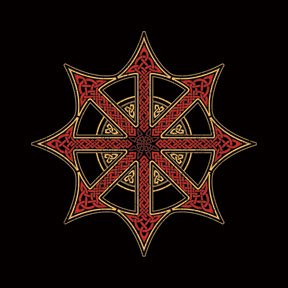
Chaos defines, in many ways, my approach to sorcery. I am deeply indebted for the elaboration of the meta-system of chaos magic(k) made by Pete Carrol and the magicians who developed his ideas to present us an approach to sorcery that is authentic, individualistic, result-orientated and compatible with a world that has gone mad. However, it must be said that the Chaos approach was not invented by the chaos magicians themselves, but was there, hidden and applied and made visible for the first time in the Zos Kia Cultus of the artist and sorcerer Austin Osman Spare. But it was the Illuminates of Thanateros who took on the sparks of this flame and made a huge fire of it that burnt down most – if not all – assumptions of western magic(k), and thus created a tour de force, which changed the underworld of western occultism forever.
Chaos for me means that magick has no form, that the nature of the multiverse is unpredictable, that its behaviour is chaotic, that rules and “laws” are invented by the human hardware, the brain, for making sense out of information that is by its very nature inconsistent. The Chaos approach gives us the opportunity to look at different systems of magic(k) as arbitrary, children of their time and culture, and possible models rather than fixed ones that often can be limiting to one’s transpersonal vision of sorcery. Therefore it encourages the individual sorcerer to explore different perspectives and applications of doing sorcery and developing her own system of magick rather than following the worn-out paths of others. Thus Chaos becomes the major tool to look at various schools of magic(k) and to choose those elements that are appealing to the sorcerer and that work for her. However, to my mind this is – as paradoxical as it may sound – also the great weakness of the Chaos approach. In a way, the traditional assumption that everything must be kept in balance is, once again, also true in this case. By concluding that every traditional system of magick uses an arbitrary classification, we blank out the fact that the traditional ways of thinking are ancient & have been in use over hundreds of generations. They reflect what Carl Gustav Jung has called the Collective Unconscious. Individualistic approaches to sorcery are useful, but an Alphabet of Desire will never achieve what a system like the Elder Futhark can bring forth & reveal (I suppose).
Order:

Chaos is not my aim, it is my primal condition. Basically, the human being is a multiplicity of selves, a morass of chaos, “a ‘schizophrenic’ identifying in one moment with a dominant thought, emotion or sensation that wears the mantle of self, just to be pushed aside by some other ‘I’ in an equally mechanical and accidental manner” (see Robert S. deRopp: The Master Game). Thus it must be the first aim of the sorcerer to make her willed order out of this chaotic condition, to create a Magnetic Centre, to create a “soul”, as it were. Though the Chaos approach is very useful, I practice no apotheosis of Chaos. But also, Chaos is not a condition that has to be overcome, but which must be controlled to an extent that enables the sorcerer to exercise her will upon the multiverse. However, Chaos is necessary and can never be controlled completely, which is not desirable anyway. Chaos and Order must maintain their inherent moment of tension. A universe which is fully controlled, from which Chaos is abolished, is dead. In a universe where order is absent, intentional action is impossible. That’s why the intelligent sorcerer looks – as in every area of her life – for a harmonious balance. Chaos and Order are two polarities from which existence, as we know it, emerges.
Left-Hand Path:
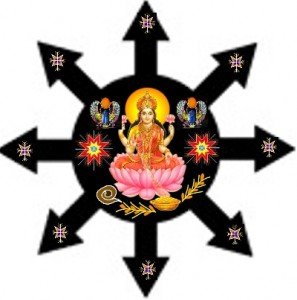
I personally see myself going beyond the Right-Hand Path & the Left-Hand Path divide, at least as its modern, neo-satanic version is concerned. However, as the idea of the LHP has been such an important philosophical thread on my magickal path, I want to discuss it here. Genesis P-Orridge once said something about “the Path of No Distinction”. This, of course, is a Tantric idea. And Tantra is a good starting point to bring clear light into such a confused darkness, because, at its heart, the concept of the LHP developed in the context of Tantra. We should look there first to find some answers. So, I hear you ask, what is Tantra? I have two good excerpts I want to quote that explain Tantra very clearly:
“Tantra is … an attempt to place kama, desire, in every sense of the word, in the service of liberation… not to sacrifice this world for liberation’s sake, but to reinstate it, in varying ways, within the perspective of salvation. This use of kama and of all aspects of this world to gain both worldly and supernatural enjoyments (bhukti) and powers (siddhis), and to obtain liberation in this life (jivanmukti), implies a particular attitude on the part of the Tantric adept toward cosmos, whereby he feels integrated within an all-embracing system of micro-macrocosmic correlations.” (“Tantrism”, Andre Padoux, in: Encyclopedia of Religion”, edited by Mircea Eliade, Macmillan, New York, 1986, Vol. 14, pp. 272 – 76.)
David White adds: “Tantra is an Asian body of beliefs and practices which, working from the principle that the universe we experience is nothing other than the concrete manifestation of the divine energy of the godhead that creates and maintains the universe, seeking to ritually appropriate and channel that energy, within the human microcosmos, in creative and emancipatory ways.” (David Gordon White (ed.) 2000: Tantra in Practice, Princeton University Press, p. 9)
So, for those of you who thought that Tantra is some kind of “sex religion” – sorry, this isn’t the case. In India the LHP-Tantrika uses unorthodox, transgressive means to achieve bhukti, siddhis and jivanmukti. She cuts her bindings from consensus reality and thus liberates the enlightened nature of her limitless consciousness. She transcends the limitations of the “socially constructed reality”, of the society and culture she lives in. By this she often works with behaviours, symbols, ideas and things that appear abominable to her identity and that are tabooed in her culture. Thus sex, death, drugs and madness become methods of transforming mundane consciousness into a state of enlightenment. Because everything is One, part of the same divine source whose nature is limitless consciousness, there is nothing to fear or to be rejected. Thus the Tantrika is freed from the delusion of separateness and embraces all existence, including her body and the material world. Because in India the left hand is used to do “unclean” things, this path to liberation has been called the Left-Hand Path. Nevertheless it is presumed by spiritual scholars that both paths, the Right-Hand Patt and the Left-Hand Path, lead to enlightenment. Not so in the Western conception of RHP and LHP in modern times. Here the basic idea is that every system of religion, mysticism and magic(k) that belongs to the RHP ultimately leads to dissolution, the Unio Mystica or the absorption of personal consciousness into godhood. Contrary to this popular conception the LHP magician initiates a process that is known as Self-Deification. Rather than dissolving into God (or Buddhahood) by confronting the abyss of existence/non-existence, the LHP magician tries to resist the urge to be absorbed and chooses to separate her psyche from the “objective” universe & to “create a self-aware, individual, enlightened, immortal and semi-divine entity” out of her “subjective” consciousness (see Ross G. H. Shott: The Dark Arts of Immortality). To my mind, this way of defining the spiritual journey (called Setianism, developed by Michael Aquino, founder of the Temple of Set) is short-sighted and rather an intellectual affair. I think the urge is rather stronger to be not absorbed and to maintain a kind of an ego. Please keep in mind that the whole discussion about separation (LHP) & annihilation (RHP) is a neo-satanic fantasy! Buddha once said something to the effect that what looks like annihilation to the outsider, is innermost bliss & enlightenment to the meditator. And this is the point: what modern Western LHP philosophy doesn’t seem to get is the mystical insight that it’s not just an either/or option of preservation or annihilation of self, but about the simultaneity of being self & nonself, the irrational moment of the Coincidentia Oppositorum – the paradox of Oneness. Fuck Hegel, when he mocks that the Coincidentia Oppositorum is“the night, when all cows are black”! Because this is the point, where the otherwise very useful tools of logic, rationality & the intellect collapse. Here language fails or becomes mystical poetry (thus not being an expression of logic anymore). So basically, my scepticism concerning these modern LHP conceptions comes from the fact that trying to preserve one’s ego is born out of fear and “denies thousands of years of meditative experience” (Sweyn Plowright). Eight seconds spent in Samadhi and such philosophical constructions would be burned in the inmost flame of uttermost ecstasy! The whole question of this appears so important to me, because the way one perceives the Sacred Self (or True Self) determines one’s interpretation of what happened with Odhinn at his Yggdrasil Ordeal, where he sacrificed himself to himSelf – expressed in his enigmatic words: sjálf sjálfum mér (myself to myself).
However, one can identify certain threads that can be found in both definitions of the LHP. First of all, there is the rejection of the common values of morality. The Left-Hand Path sorcerer deconditions herself from the cultural fiction she was brought up with – the cultural memes, as it were. Of course this doesn’t lead to an aversion of the values of one’s own culture. Because choosing to be anti-cultural would just mean to submit to a form of control and herd conditioning as well. The core idea here is to break inner taboos, to confront oneself with inner fears, disgusts, dislikes, repulsions etc. and to free oneself from self-imposed limitations of one’s identity (a form of Ego Magic in chaospeak; Ego Magic is about change, not about maintaining the ego like in neo-satanic philosophy). Thus a more authentic, flexible, fluid and free state of Self-consciousness can be reached. This procedure has been called antinomianism in the Western LHP tradition. This should lead to a rejection of dogmatism in general, which enables the sorcerer to question the “truths” of any magic(k)al ‘tradition’ and any route or map that pretends to show the entire path towards perfection. This leads to the second point of a genuine LHP sorcerer from my point of view: the developing of one’s own system of sorcery. (Don Webb in his witty book about the Setian path, Uncle Setnakt’s Essential Guide to the Left-Hand Path, stresses the point that one should first master a Traditional system of magick, before one attempts to create one’s own system. To my mind, this makes sense.) The sources for this process have been given to us by Austin Osman Spare and chaos magick writers. Further the LHP sorcerer doesn’t fall into the trap of denying their own ego, body and the material world. All of these are tools to power and fulfilment. LHP sorcerers don’t deny this world, they embrace it! LHP sorcerers realize that every individual has to follow her own path, her own unique explorations of what is possible for the body/mind/spirit trinity, without being dependent upon any person or system. Finally it must be add that sorcerers on the LHP are not interested in the “common good”, “God”, the “state” or any other abstract idea that submits the individual to some “higher purpose”. In the first place the LHP sorcerer strives for Self-Empowerment and her own enlightenment.
I think all those ideas describing a LHP sorcerer could also apply to a Chaos Heathen or be applied by a Chaos Heathen to her own ends, though, when I consider this thoroughly, what could be not applied by a Chaos Heathen? So, if one wants to preserve the idea of the LHP in Chaos Heathenism or apply it in that context, the best definition of the LHP to me would be that one does not follow anyone or any fixed routes to enlightenment, but rather that one follows one’s own path. The Chaotick Path makes more sense.
Magick & Wyrd:
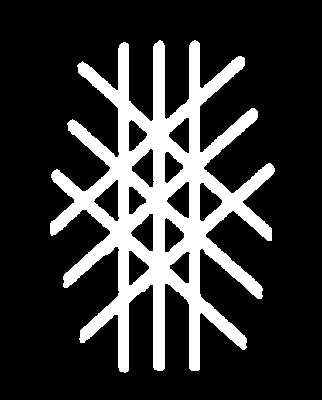
Ceremonial Magic(k), also the one with Crowley’s ‘k’, has been associated for a very long time with so-called ‘High Magic’, which suggests that there’s some kind of ‘Lower Magic’. In the late 19th & early 20th century this meant that High Magic strives towards spiritual aims, whilst Lower Magic was orientated towards material results, basically sorcery of the rural population – folk magic (see Phil Hine: Condensed Chaos). The divisions between matter/spirit appear as utter nonsense in the face of modern neurology, or even neurotheology. This is one of the reasons why I came to reject Ceremonial Magic(k) & turned towards Chaos & Rune Magic(k). Such dualistic conceptions, like High & Low Magic, are rooted in Platonic Idealism, which were perpetuated by the monotheistic cults, from which they entered the ideological superstructure of modern occultism with its pretentious obscurantism and pompous, ego-blown ritualism. I wholeheartedly reject such short-sighted, body- and world-denying dualisms.
Magick, as Dave Lee has demonstrated in his wonderful & brilliant book Chaotopia!, includes three things:
1) making things happen to consensus reality (sorcery),
2) making things happen to one’s own consciousness according to will (self-transformation) and
3) experiencing higher states of consciousness, often leading to unitary consciousness (mysticism). In the first case (sorcery) we manifest results in Midgard or, to put it simply, in the material world. In the second case (self-transformation) we change the world of our subjective experience, which is the only way we can experience reality in the end anyway.
Self-Transformation (making things happen to consciousness) often leads to mysticism (see Dave Lee: Chaotopia!). This process (mystical experience) cannot be easily recognized by others as a result in Midgard, probably that’s why it has been excluded from chaos magick – a drawback Dave Lee corrects in Chaotopia!. In the final analysis, magick is a sublime art, and either the results of a working are ‘material’ in its plain sense or they remain – for the sceptic – subjective. The reason why I want to include “chaos-mystical”(Dave Lee) operations into the concept of magick (freed from its Low/High magic divide) has wide-ranging philosophical implications that stem from my vision of the world. This vision is holistic, animistic, & mystical – suspending the immanence/transcendence divide. Here the idea of Wyrd is very useful, which I sometimes refer to as The Net of Power. This multivalent term is reflected in Indo-European mythology of Indra’s Web and, most importantly, in Teutonic sorcery in the idea of Wyrd and the myth of the Three Norns. “Wyrd can be translated as ‘Coming Into Being’. Wyrd is imagined as a tapestry woven by the three Norns, called Urd, Verdandi and Skuld, representing an interconnected ‘fabric’ underlying all events that is manifest in every shape. Urd – still resonating in the German syllable Ur – suggests the primal or ancient and stands for the unseen influences underlying an event. It is the unmanifest potential, wherein all possibilities exist. Skuld means ‘should’ – that, what should happen if all progresses without interference” (see Sweyn Plowright: True Helm). But here we can see the wisdom of the Germanic peoples of old: Skuld is not a deterministic future, like the idea of fate in Christian conceptions of time, but is one that can be influenced, that is changeable and open to ‘chance’. “Verdandi is the process of ‘Coming Into Being’, that which is becoming or manifesting, the present moment, which we perceive as the manifest world” (Sweyn Plowright: True Helm). The sorcerer empowers herself by realizing that this vast Net of Power exists. Dr. Hyatt has described this concept in a non-Germanic context as “a web of gigantic sets of interwoven neocid-correlation matrices where one tiny push in the right place causes an entire field to collapse” (see Christopher Hyatt: The Psychopath’s Bible). We pull an entire system of symbolic signs and correspondences over this Net of Power(or we can say, the system emerges from the Net), which builds up our magickal “psychocosm” (Phil Hine). This enables us to manipulate the Net, or our Wyrd,according to our congruent Will. Thus chaos Heathen sorcerers empowerthemselves to make their innermost dreams, desires, visions and their quest for wisdom flesh. Hence the definition of magick has been often described as the pursuit of power.
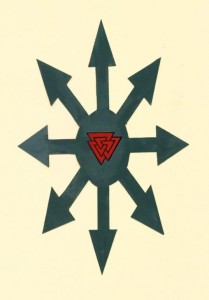
References:
– CHAOTOPIA! – Sorcery and Ecstasy in the Fifth Aeon, Dave Lee
– THE MASTER GAME – Pathways to Higher Consciousness, Robert S. De Ropp
– TRUE HELM – A Practical Guide to Nothern Warriorship, Sweyn Plowright
– THE PSYCHOPATH’S BIBLE – For the Extreme Individual, Dr. Christopher Hyatt with Dr. Jack Willis
– THE DARK ARTS OF IMMORTALITY: Transformation through War, Sex, & Magic,
Ross G. H. Shott
CONDENSED CHAOS – An Introduction to Chaos Magic, Phil Hine
Edred Thorsson’s Radio Free Runa talks at: http://edred.net/community/
The band Fire + Ice, especially the albums: RUNA & BIRDKING





 “…To say what has never been said, to see what has never been seen,… to push the envelop of creativity and language…” Terence McKenna
“…To say what has never been said, to see what has never been seen,… to push the envelop of creativity and language…” Terence McKenna